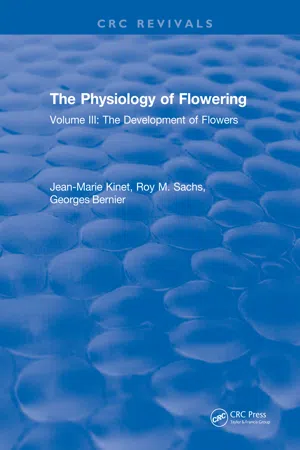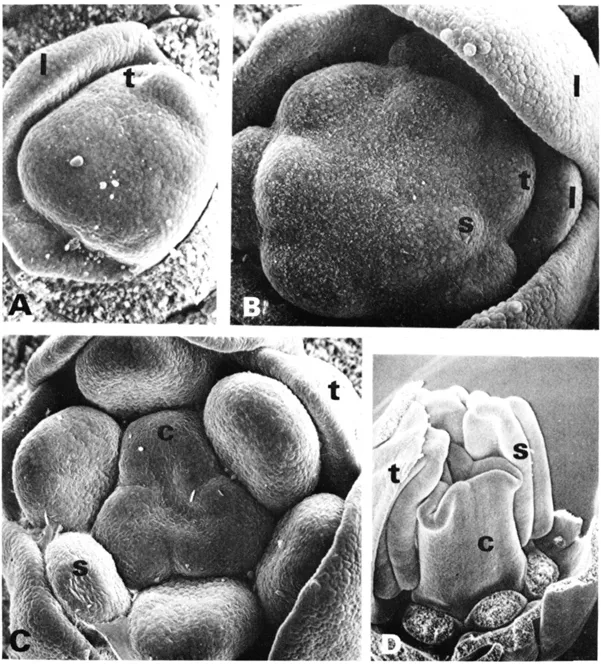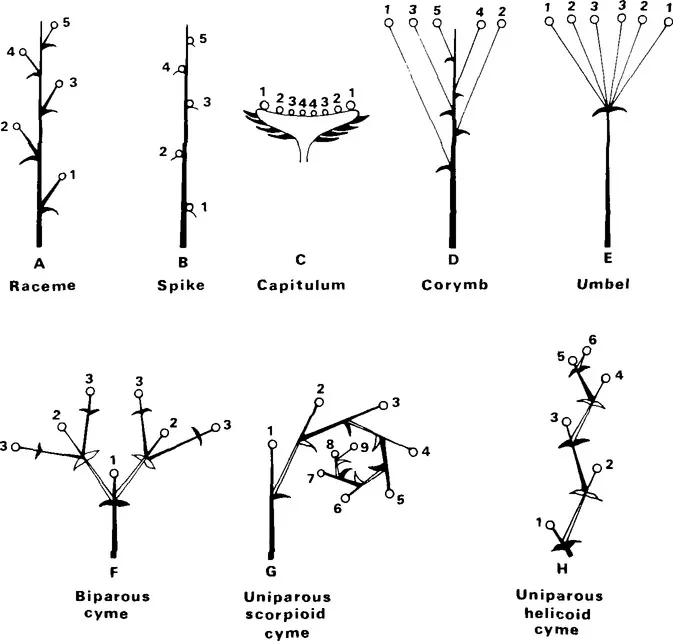
This is a test
- 286 pages
- English
- ePUB (mobile friendly)
- Available on iOS & Android
eBook - ePub
Book details
Book preview
Table of contents
Citations
About This Book
The present work is organised such that the whole phenomenon of flowing is divided into two major steps: 1. the initiation of flower primordia and 2. The development of these primordia into mature flowers until anthesis. With this volume aiming to to provide a balanced account of themost important and recent contributions in all aspects of the subject.
Frequently asked questions
At the moment all of our mobile-responsive ePub books are available to download via the app. Most of our PDFs are also available to download and we're working on making the final remaining ones downloadable now. Learn more here.
Both plans give you full access to the library and all of Perlego’s features. The only differences are the price and subscription period: With the annual plan you’ll save around 30% compared to 12 months on the monthly plan.
We are an online textbook subscription service, where you can get access to an entire online library for less than the price of a single book per month. With over 1 million books across 1000+ topics, we’ve got you covered! Learn more here.
Look out for the read-aloud symbol on your next book to see if you can listen to it. The read-aloud tool reads text aloud for you, highlighting the text as it is being read. You can pause it, speed it up and slow it down. Learn more here.
Yes, you can access The Physiology of Flowering by Jean-Marie Kinet in PDF and/or ePUB format, as well as other popular books in Biological Sciences & Botany. We have over one million books available in our catalogue for you to explore.
Information
Chapter 1
MORPHOLOGY OF INFLORESCENCE AND FLOWER DEVELOPMENT
TABLE OF CONTENTS
I. Introduction
II. Some Case Descriptions
A. Solitary Flowers
B. Racemose Type of Flower Groupings
1. Raceme
2. Spike
3. Capitulum
4. Other Racemose Inflorescences
C. Cymose Type of Flower Groupings
D. Complex Inflorescences
III. Generalities on the Morphogenesis of Reproductive Structures
A. Sequence of Initiation
B. Histogenetic Origin
C. Common Primordia
D. Number of Floral Organs
E. Changes in Phyllotaxis
F. Fusion of Floral Organs
1. Corolla Tubes
2. Stamen Fusion
3. Carpel Fusion
G. Zonal Growth and the Development of Perigynous and Epigynous Flowers
H. Zygomorphic Flowers
I. Incomplete and Unisexual Flowers
J. Polymorphic Flowers
K. Termination of Activity in Reproductive Meristems
IV. Growth and Development Patterns of Reproductive Structures
A. Sequence of Development
B. Trend towards Synchronous Development
C. Growth Rates
D. Secondary Displacement of Parts
E. Incomplete, Aborted, and Abnormal Development
1. Incompleteness and Abortion
2. Abnormalities
F. Flower Bud Dormancy
V. Cellular and Molecular Changes
A. Cell Proliferation
B. Polarity of Cell Growth and Division and the Genesis of Forms
C. RNA Content, Protein Complement, and Gene Expression
Conclusions
Some of the controversial matters, which figure so largely in the morphological literature, either become unimportant, or can be harmonized, if the concepts of organogenesis are transferred from the morphological to the physiological plane.
C. W. Wardlaw*
I. Introduction
The various changes that occur in shoot apices during floral evocation were described in Volume II, Chapters 2 to 5. Evoked apices normally develop into either a solitary flower or more often a cluster of flowers. Although we concluded in Volume II that, as far as the available evidence goes, the features of evocation seem fairly universal, there is on the contrary an extraordinary diversity of structural changes occurring during inflorescence and flower morphogenesis. All of these possible variations result in an enormous array of forms that makes inflorescences and flowers the beautiful objects they are.1,2 As will become clear in the following chapters, the many stages that can be distinguished in the ontogeny of these reproductive structures do not all react similarly to environmental variables and growth regulators, and thus are not all alike. In physiological investigations they should be considered independently and in relationship to one another. These investigations should therefore have a firm morphological basis and the frequent reluctance of physiologists to enter into the details of structural changes should be overcome. Following this view we shall describe in Section II of this chapter the reproductive structures of a few species among those which are most preferentially used in the studies reviewed in this volume. Emphasis will be given to early ontogeny of these structures since macroscopic characteristics of mature inflorescences and flowers are determined by their early morphogenetic pattern. Then, starting from the diversity of morphological processes, we shall try to see in Sections III and IV if there are rules governing the morphogenesis of these varied forms and their further growth and development. A small Section V on cellular and molecular changes observed during flower development terminates this chapter.
Some of the terms, e.g., carpel, we shall use in our descriptions are unfortunately not simply descriptive but interpretive since they have been created or used by morphologists within the framework of conflicting theories on the interpretation of the nature of inflorescences and flowers. There is little need and no gain to the physiologist in entering these controversies. The unavoidable use of morphological terms in this volume is purely descriptive and does not imply acceptance of the corresponding theories.
II. Some Case Descriptions
A. Solitary Flowers
Tulip (Tulipa gesneriana) plants produce a solitary flower at the top of their main axis. The apical meristem, from which next year’s flower will develop, produces three to five foliage leaves, then increases in size and height and initiates in rapid sequence: (1) the three outer perianth members or tepals (Figure 1A), (2) the three inner tepals, (3) the outer whorl of three stamens, each located in the axil of an outer tepal (Figure 1B), (4) the inner whorl of three stamens, each located in the axil of an inner tepal, and (5) the three carpels which alternate with the three inner stamens (Figure 1C). Several workers claimed that each tepal and associated stamen, in other Liliaceae species related to the tulip, arise together from a unique primordium and become distinct only during later growth.1,3,4 Work by Shoub and de Hertogh with the more refined technique of scanning electron microscopy (SEM) has shown, however, that tepals and stamens are initiated independently (Figure 1), even though they may have the appearance of a united primordium with a dissecting light microscope.5 The meristem, which is dome shaped until stamen initiation, becomes flat topped later on. Carpels appear as three crescent-like ridges which are initially free. The carpellary ridges grow towards the center of the flower where their margins meet and fuse. The compound ovary then grows upward and produces a three-lobed stigma at its top (Figure 1D). Placentae develop at the junctions of the carpellary ridges and each bears numerous ovules.

Figure 1 SEM micrographs of apical meristem of Tulipa gesneriana (tulip). (A) At the stage of initiation of the three outer perianth members or tepals (t). The last leaf (1) primordium is visible. (B) At the stage of initiation of the outer whorl of three stamens (s). Leaf primordia and the two sets of tepals are visible. (C) At the stage of initiation of the three carpels (c). (D) Young developing flower bud. Magnification in D is four times lower than in A, B, and C. (From Shoub, J. and de Hertogh, A. A., J. Am. Soc. Hortic. Sci., 100, 32, 1975. With permission.)
Solitary flowers may also be found exclusively in axillary positions, e.g., in Anagallis arvensis and Impatiens balsamina. In conditions continuously favorable to flowering, these plants bear one flower in each leaf axil. This kind of floriferous stem is very similar to a raceme without a terminal flower (see below), except for the presence of leaves instead of bracts. In other plants, like Pharbitis nil, both a terminal and several axillary flowers are formed.

Figure 2 Diagrams of some of the common types of inflorescences. Flowers are represented by circles and their order of initiation indicated in numerical sequence with flower 1 being the oldest. (From Camefort, H. and Boué, H., Reproduction et Biologie des Végétaux Supérieurs, Doin, Paris, 1980. With permission.)
B. Racemose Type of Flower Groupings
In the racemose inflorescences, the apical reproductive meristem produces flowers typically in an acropetal direction. The oldest flowers are thus at the base of these inflorescences and the youngest near their apex. A terminal flower may or may not be formed. Growth is considered to be indeterminate because it is theoretically possible for such inflorescences to continue developing new flowers at their apex for an extended period. Actually the number of flowers produced may be small and growth may stop rather soon. The classical type of racemose inflorescence is the “raceme”, which consists of a unbranched, elongated axis with pedicellate lateral flowers subtended or not by bracts (Figure 2A). All other racemose inflorescences can be derived from this prototype.
1. Raceme
Cruciferae, like Arabidopsis, Brassica, and Sinapis, typically produce racemes. In Sinapis prior to flower initiation, a “buttress” is formed on one flank of the reproductive meristem, essentially by repeated anticlinal divisions in the four to five most superficial cell layers. Initiation then occurs by periclinal divisions in the third and/or fourth layers of the buttress. This is followed by other variously oriented divisions in the surrounding cells, and the flower primordium, uniformly meristematic, emerges above the meristem surface (see Volume II, Chapter 3, Figure 6).6 With initiation of a flower primordium, a sector of the flank is largely consumed in the process and this sector is usually restored by divisions — mostly anticlinal — in the remaining cells in the axils of the primordium, not in the central cell...
Table of contents
- Cover
- Half Title
- Title Page
- Copyright Page
- Objectives and Organization of the Work
- The Authors
- Acknowledgments
- The Physiology of Flowering
- Table of Contents
- Chapter 1 Morphology of Inflorescence and Flower Development
- Chapter 2 Experimental Systems
- Chapter 3 Control by Nutrition
- Chapter 4 Control by Light
- Chapter 5 Control by Temperature and Water Stress
- Chapter 6 Basic Role of Correlative Influences
- Chapter 7 Exogenous Substances
- Chapter 8 Levels, Distribution, and Metabolism of Endogenous Substances
- Chapter 9 Photosynthesis, Assimilate Supply, And Utilization
- Chapter 10 Concluding Analysis of the Flowering Problem
- Chapter 11 Applied Aspects of Floral Initiation and Development
- Addendum
- References
- Glossary
- Abbreviations
- Species Index
- Subject Index